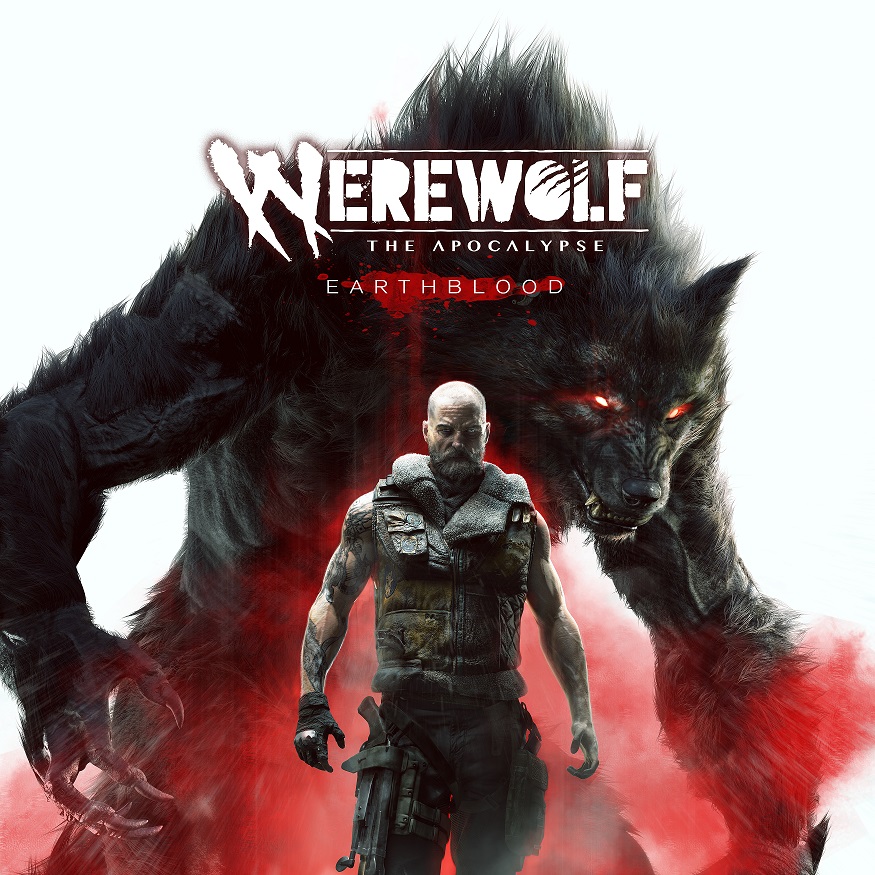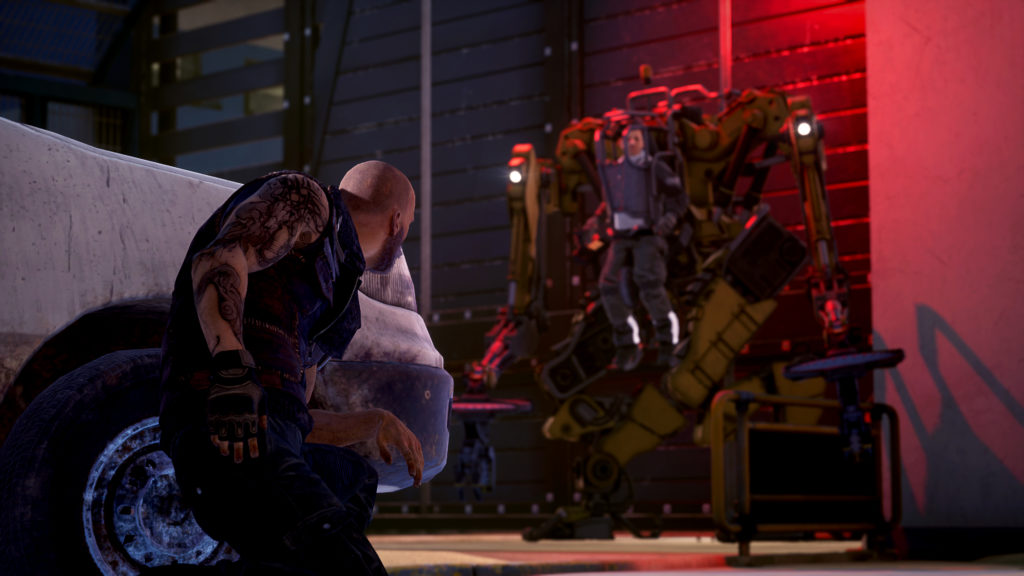Werewolf: The Apocalypse Brought to Digital Life in Earthblood

For a solid year in college, every Saturday morning, a group of us would gather together in a friend’s dorm room and play Werewolf: The Apocalypse. This roleplaying game wasn’t made up of your traditional fantasy werewolves, no. In the dark and contemporary setting of Werewolf, the shapeshifting Garou are an ancient lineage of warriors that fight to defend Gaia, the embodiment of nature itself, from being despoiled by both corrupt influences of decay and stagnant modern technology. Your enemies were multinational corporations and corrupt demonic entities … often working together to ruin the world.
As a game where characters can transform into hulking figures of muscle, fang, and claw, it leaned a bit more into physicality than I generally go for … but there was a strong spiritual aspect to the game, as well, which did well to balance the physical. The Garou weren’t just there to kill things, but to restore a natural balance and harmony. The world was spiritually off-kilter, and the Garou were here to wrench it back into harmony … even if a lot of people had to die in the process.
Which leads me into the most recent incarnation of Werewolf, released today across a variety of gaming platforms … Werewolf: The Apocalypse – Earthblood. This game definitely brings together the most crucial thematic elements of the Werewolf setting together with exceptional design and playability, into a package that’s well worth it, for both old fans of the genre and players new to it.
So, as the lead-up implies, in this game you play a Garou, a warrior of Gaia, who is fighting against demonic corruptors and multinational corporations to defend the planet. As a Garou, you have three forms: a human form, a wolf form, and a massive Crinos wolf-man form.
The wolf form gives you bonuses to speed and stealth, and is optimal for sneaking up close to your enemies. There are certain features of the game, such as moving through small openings, that can only be accessed in this form.
The human form is the most versatile. It allows you to interact with environment features like doors and keypads, while also performing quiet takedown maneuvers to eliminate enemies without being noticed. If they’re too far away, you can also fire at them with a crossbow, all while hopefully avoiding notice of enemy guards, video cameras, and search lights. You can even sabotage the environment, so that when the inevitable fights break out, there are fewer options for reinforcements to arrive. This is really the mode where that allows a player to focus on strategy and cunning to make their way around the game challenges.
The Crinos form, on the other hand (or should I say “other claw”?), means that being noticed has ceased to be an issue. They know about you, and it’s a kill-or-be-killed situation. These are brutal, bloody battles, and guided by your growing Rage you are able to wield a variety of powers to get through them. Just hope they don’t have too many silver bullets, as those things sting and can’t be easily healed.
As you complete missions, explore the world, and advance through the narrative, you liberate spirits that grant you additional powers. You unlock these through a skill tree, a means by which you can customize your character’s abilities. You get to decide if you want to improve your stealth abilities, become combat-hardened, or expand the functionality of your crossbow, to list just some of the examples.
The spirit world also influences the game with the ability to access spirit sight, to see beyond the Gauntlet into the the Umbra. This sight is another way to interact strategically with the game, granting insights into environmental elements or threats before you engage them. For example, the spirit sight can indicate that a room has enemies with silver weaponry or show the location of computer consoles that are can be used to disable video cameras or unlock doors. At its most basic, it gives you advanced warning if there are enemies on the other side of a door you’re about to open.
The narrative is just as brutal as the combat of the game itself. It begins with a prelude sequence that does a great job of setting the emotional tone of loss and rage. This is one element of the game I won’t go into too far here, because I don’t want to spoil any of the twists, but the storyline is built out of the consequences of that first scene, as the protagonist comes to terms with what takes place and tries to make things right.

Now that I’ve sung its praises, I suppose it’s worth mentioning the weaker points.
I would say that the only flawed element of the game is the cut scenes. Though the graphics are phenomenal in this game, the animation during the cut scenes is the only place where it seems like it falls short of expectations. The facial design is just a little off. Body movements are a little stilted. Postures don’t look quite natural. It’s not horrible, to be sure. It would have looked like top-notch animation a decade or so ago, probably. But now it’s in this weird uncanny valley where it’s just obvious enough that you recognize how awkward and unnatural it is. In part, it is also noticeable because the rest of the visual design is so well done.
If I were given an ability to wish for one modification to Earthblood, it would be for to design your own characters from scratch. As with so many roleplaying games, the RPG had a lot of traits that could be selected to vary up the core features. While Earthblood‘s skill tree for advancement is well handled, it is nothing compared to the versatility that Werewolf: The Apocalypse afforded in RPG form. A homid Bone Gnawer ragabash Garou was a city-dwelling trickster, while a lupin Silver Fang ahroun was a vicious pack leader. In addition to the experience you gain, there was also a Renown system that tracked your advancement within Garou society, and the powers that spirits afforded you through the form of various magical rituals. Earthblood trades this versatility of character growth in for a more basic skill progression … but that is really a minor complaint. The idea that you could build any type of Garou you want for a video game is really a dream scenario, and I’m not that upset that this dream isn’t realized. Even more ambitious would be to play a team of Garou, each with different skills and builds, that are working together as a pack to complete the missions. But I am not sure there’s enough demand for that sort of game to justify the increase in design work it would entail, so I can’t fault anyone for not going that route this time around. Of course, if there are any sequels, this would be a great way to go.
Overall, it is great to see one of my favorite roleplaying games realized this completely in a video game format. With two kids, I am rarely the one who picks the video games or gets time in front of the Xbox, but I’ve definitely enjoyed claiming it to get a chance at this game. Both my kids, who have never played Werewolf as an RPG, also enjoyed the video game. It really has something for everyone.
Including blood. It does have a lot of blood. I mean, probably not as much as a Vampire: The Masquerade video game … but, still, a lot of blood.
You can find out more about the game, including watch gameplay trailers, at their official webpage. It is available for Xbox and Playstation, as well as for download on PC via Epic Games Store.